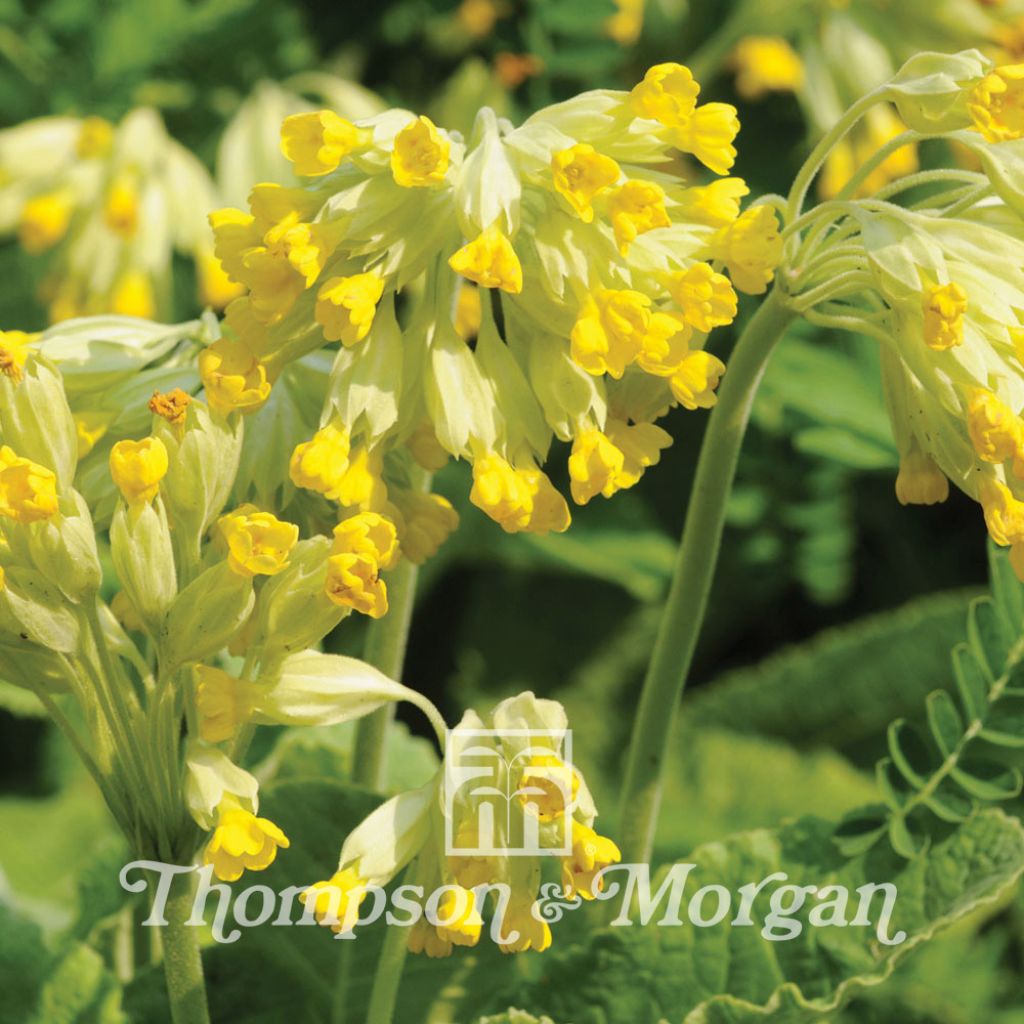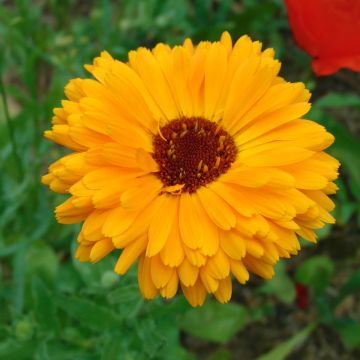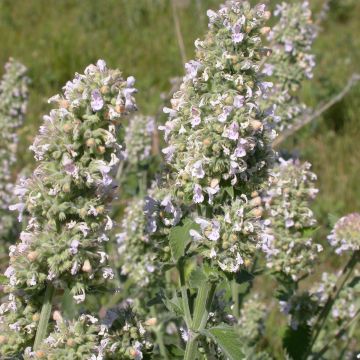

Primula veris Seeds - Cowslip
Primula veris Seeds - Cowslip
Primula veris
Cowslip Primrose, Woodland Cowslip, Common Cowslip
Received on time and in good condition. Now I just need to sow them, get them to sprout and grow them this summer. To plant them in the autumn... I hadn't taken into account this detail: 150 young plants to plant. I won't be bored this autumn! ;=)
Eric S., 23/04/2019
Special offer!
Receive a €20 voucher for any order over €90 (excluding delivery costs, credit notes, and plastic-free options)!
1- Add your favorite plants to your cart.
2- Once you have reached €90, confirm your order (you can even choose the delivery date!).
3- As soon as your order is shipped, you will receive an email containing your voucher code, valid for 3 months (90 days).
Your voucher is unique and can only be used once, for any order with a minimum value of €20, excluding delivery costs.
Can be combined with other current offers, non-divisible and non-refundable.
Home or relay delivery (depending on size and destination)
Schedule delivery date,
and select date in basket
This plant carries a 6 months recovery warranty
More information
We guarantee the quality of our plants for a full growing cycle, and will replace at our expense any plant that fails to recover under normal climatic and planting conditions.
Would this plant suit my garden?
Set up your Plantfit profile →
Description
Primula veris more commonly known as cowslip, also carries the name Common Cowslip or Cowslip Primrose. This botanical species native to our meadows and open woodlands, blooms in April, in small dangling clusters of finely scented, deep yellow tubular flowers. It is found in areas with chalky soils, on slopes, roadsides and in meadows. It is a very undemanding plant that accepts poor, stony soils that dry in summer and that naturalizes easily in the garden. It is a carefree plant, ideal for natural gardens and partially shaded rock gardens. It also finds its place in physic gardens or in brighter, open undergrowth.
Belonging to the primulaceae family, Primula veris is probably the wild primrose we know best. It is found along roadsides and in woodland edges in many regions of France, but is rarer in the Mediterranean and western parts of France. It can be found from Eastern to Western Europe, but also in Iran, Turkey, and as far as the North-east of Mongolia. The common Cowslip is most noticeable in Spring, in May when its flowers appears because the rest of the year it displays a low-lying, leafy rosette that blends into its environment. This plant develops flower stems measuring 20 to 30 cm in height whose tips bear clusters of delicately scented, deep yellow tubular flowers. The calyces and corollas are fused together, featuring petals with orange markings at their base. This primrose produces two types of flowers, all hermaphrodite. On some plants, the pistil protrudes beyond the seed which prevents self-pollination. Other plants have flowers with stamens that are longer than the pistil. The delay in the maturation of the reproductive organs forces the plant to reproduce by cross-pollination. It is worth noting that the flowers produce a very fragrant nectar, much appreciated by pollinating insects. The semi-evergreen basal rosette is made up of elongated, simple, crinkly, oval leaves of a very fresh light green hue and that are very similar to those of the common primrose. Their upper side is slightly glandular while their under side is fuzzy and greyish.
Primula officinalis is versatile and easy to grow. It deserves to be in every garden. Colourful, abundantly flowering and fragrant, it combines well with all spring blooms. In borders of flowerbeds or in window boxes on a balcony, these plants are ideal companions for tulips and forget-me-nots. It is ideal in borders, low-lying beds under the cover of broad-leaved trees, in rock gardens and in lawns, planted among snowdrops and violets. The leaves and flowers are edible and can be eaten raw or cooked.
Benefits:
These are identical to those of common primrose and oxlip: the flowers are soothing and calming and are used as an expectorant. The leaves are used to help heal bruises and the whole plant (especially the root) has analgesic, antispasmodic, diuretic and expectorant properties.
Flowering
Foliage
Plant habit
Botanical data
Primula
veris
Primulaceae
Cowslip Primrose, Woodland Cowslip, Common Cowslip
Northern Europe
Other Thompson and Morgan seeds
View all →Planting and care
Cowslip sown in spring will produce plants that will flower the following spring. Sown in August, the plants produced can sometimes flower in spring, but they will be smaller. The primrose plants will fill out over time. These plants benefit from being planted in groups and reseed spontaneously without becoming invasive.
Growing outdoors:
Plant primroses in the morning sun or in partial shade, in well-drained but fertile, humus-rich soil. These plants do not fare well in soil that dries in summer or soil that is waterlogged in winter. Water well in the weeks following transplanting, especially in dry weather, to ensure their recovery. Regular watering in the summer will also be necessary in case of extreme heat and drought. These easy-to-grow plants will not need any special care apart from the removal of wilted flowers and leaves.Growing in pots:
Remember to improve drainage at the bottom of the container by putting a layer of gravel, shards of earthen pots, or clay pebbles to facilitate the evacuation of water and avoid asphyxiation of the roots. A mixture of leaf compost and garden soil will do the job just fine.
Place the pot in partial shade or in the sun and water regularly to keep the soil always slightly moist to sustain flowering. Every two week, add a little fertilizer for flowering plants to the irrigation water and remove faded flowers to extend the flowering period.
Sowing period
Intended location
Planting & care advice
-
, onOrder confirmed
Reply from on Promesse de fleurs
Haven't found what you were looking for?
Hardiness is the lowest winter temperature a plant can endure without suffering serious damage or even dying. However, hardiness is affected by location (a sheltered area, such as a patio), protection (winter cover) and soil type (hardiness is improved by well-drained soil).

Photo Sharing Terms & Conditions
In order to encourage gardeners to interact and share their experiences, Promesse de fleurs offers various media enabling content to be uploaded onto its Site - in particular via the ‘Photo sharing’ module.
The User agrees to refrain from:
- Posting any content that is illegal, prejudicial, insulting, racist, inciteful to hatred, revisionist, contrary to public decency, that infringes on privacy or on the privacy rights of third parties, in particular the publicity rights of persons and goods, intellectual property rights, or the right to privacy.
- Submitting content on behalf of a third party;
- Impersonate the identity of a third party and/or publish any personal information about a third party;
In general, the User undertakes to refrain from any unethical behaviour.
All Content (in particular text, comments, files, images, photos, videos, creative works, etc.), which may be subject to property or intellectual property rights, image or other private rights, shall remain the property of the User, subject to the limited rights granted by the terms of the licence granted by Promesse de fleurs as stated below. Users are at liberty to publish or not to publish such Content on the Site, notably via the ‘Photo Sharing’ facility, and accept that this Content shall be made public and freely accessible, notably on the Internet.
Users further acknowledge, undertake to have ,and guarantee that they hold all necessary rights and permissions to publish such material on the Site, in particular with regard to the legislation in force pertaining to any privacy, property, intellectual property, image, or contractual rights, or rights of any other nature. By publishing such Content on the Site, Users acknowledge accepting full liability as publishers of the Content within the meaning of the law, and grant Promesse de fleurs, free of charge, an inclusive, worldwide licence for the said Content for the entire duration of its publication, including all reproduction, representation, up/downloading, displaying, performing, transmission, and storage rights.
Users also grant permission for their name to be linked to the Content and accept that this link may not always be made available.
By engaging in posting material, Users consent to their Content becoming automatically accessible on the Internet, in particular on other sites and/or blogs and/or web pages of the Promesse de fleurs site, including in particular social pages and the Promesse de fleurs catalogue.
Users may secure the removal of entrusted content free of charge by issuing a simple request via our contact form.
The flowering period indicated on our website applies to countries and regions located in USDA zone 8 (France, the United Kingdom, Ireland, the Netherlands, etc.)
It will vary according to where you live:
- In zones 9 to 10 (Italy, Spain, Greece, etc.), flowering will occur about 2 to 4 weeks earlier.
- In zones 6 to 7 (Germany, Poland, Slovenia, and lower mountainous regions), flowering will be delayed by 2 to 3 weeks.
- In zone 5 (Central Europe, Scandinavia), blooming will be delayed by 3 to 5 weeks.
In temperate climates, pruning of spring-flowering shrubs (forsythia, spireas, etc.) should be done just after flowering.
Pruning of summer-flowering shrubs (Indian Lilac, Perovskia, etc.) can be done in winter or spring.
In cold regions as well as with frost-sensitive plants, avoid pruning too early when severe frosts may still occur.
The planting period indicated on our website applies to countries and regions located in USDA zone 8 (France, United Kingdom, Ireland, Netherlands).
It will vary according to where you live:
- In Mediterranean zones (Marseille, Madrid, Milan, etc.), autumn and winter are the best planting periods.
- In continental zones (Strasbourg, Munich, Vienna, etc.), delay planting by 2 to 3 weeks in spring and bring it forward by 2 to 4 weeks in autumn.
- In mountainous regions (the Alps, Pyrenees, Carpathians, etc.), it is best to plant in late spring (May-June) or late summer (August-September).
The harvesting period indicated on our website applies to countries and regions in USDA zone 8 (France, England, Ireland, the Netherlands).
In colder areas (Scandinavia, Poland, Austria...) fruit and vegetable harvests are likely to be delayed by 3-4 weeks.
In warmer areas (Italy, Spain, Greece, etc.), harvesting will probably take place earlier, depending on weather conditions.
The sowing periods indicated on our website apply to countries and regions within USDA Zone 8 (France, UK, Ireland, Netherlands).
In colder areas (Scandinavia, Poland, Austria...), delay any outdoor sowing by 3-4 weeks, or sow under glass.
In warmer climes (Italy, Spain, Greece, etc.), bring outdoor sowing forward by a few weeks.




















































